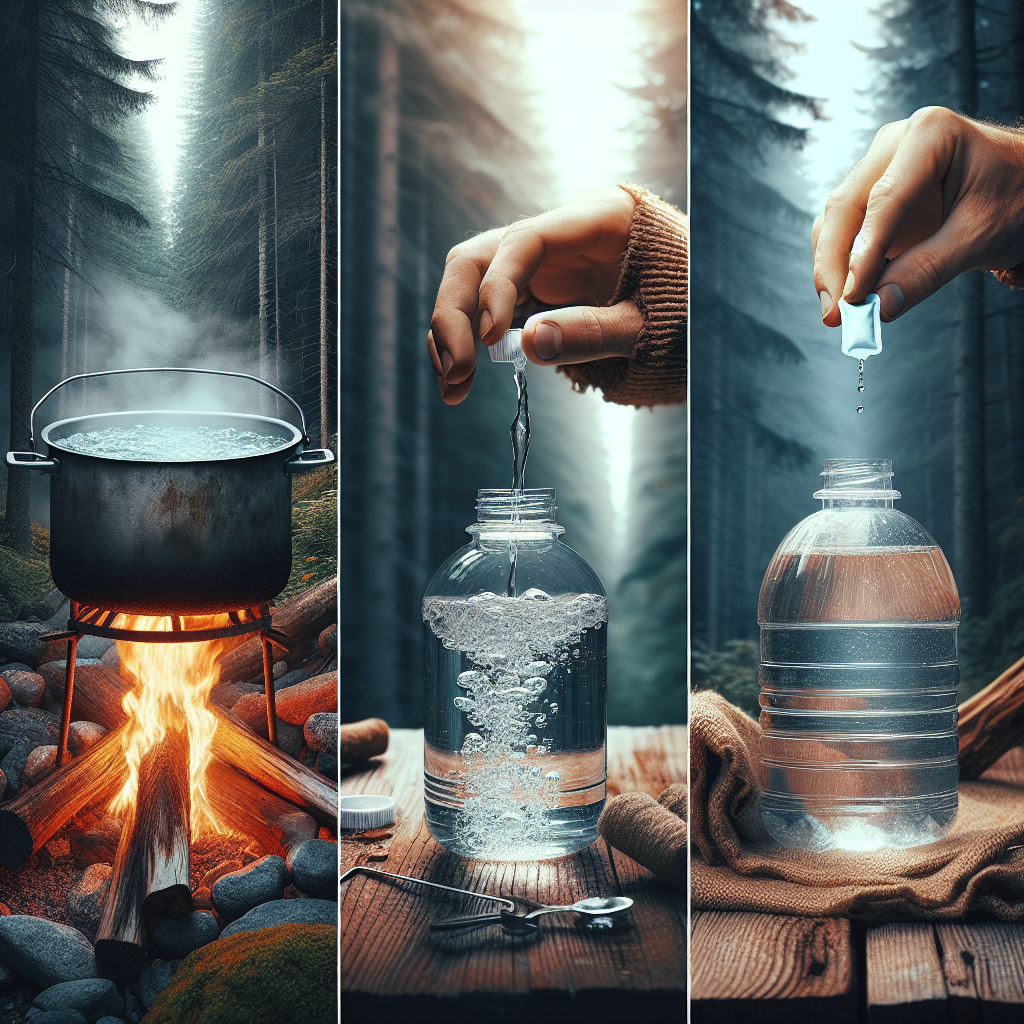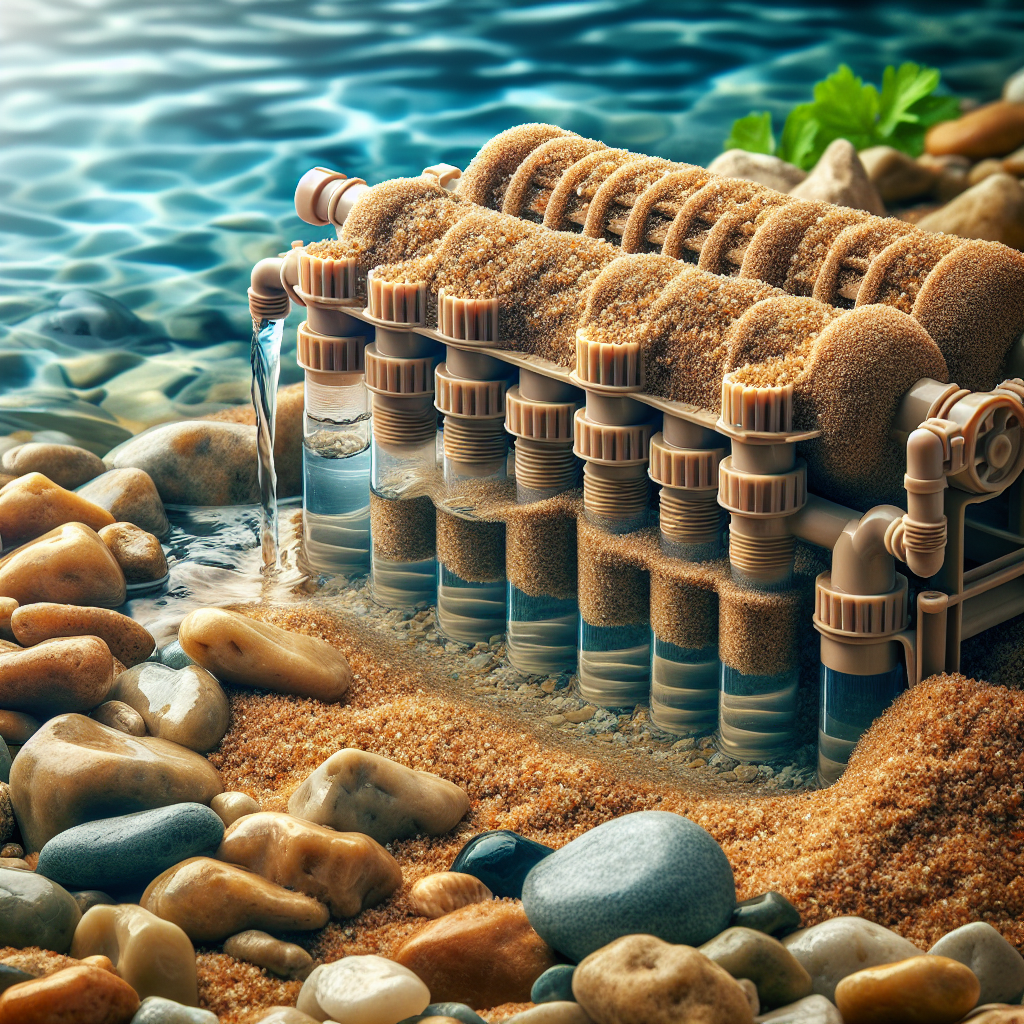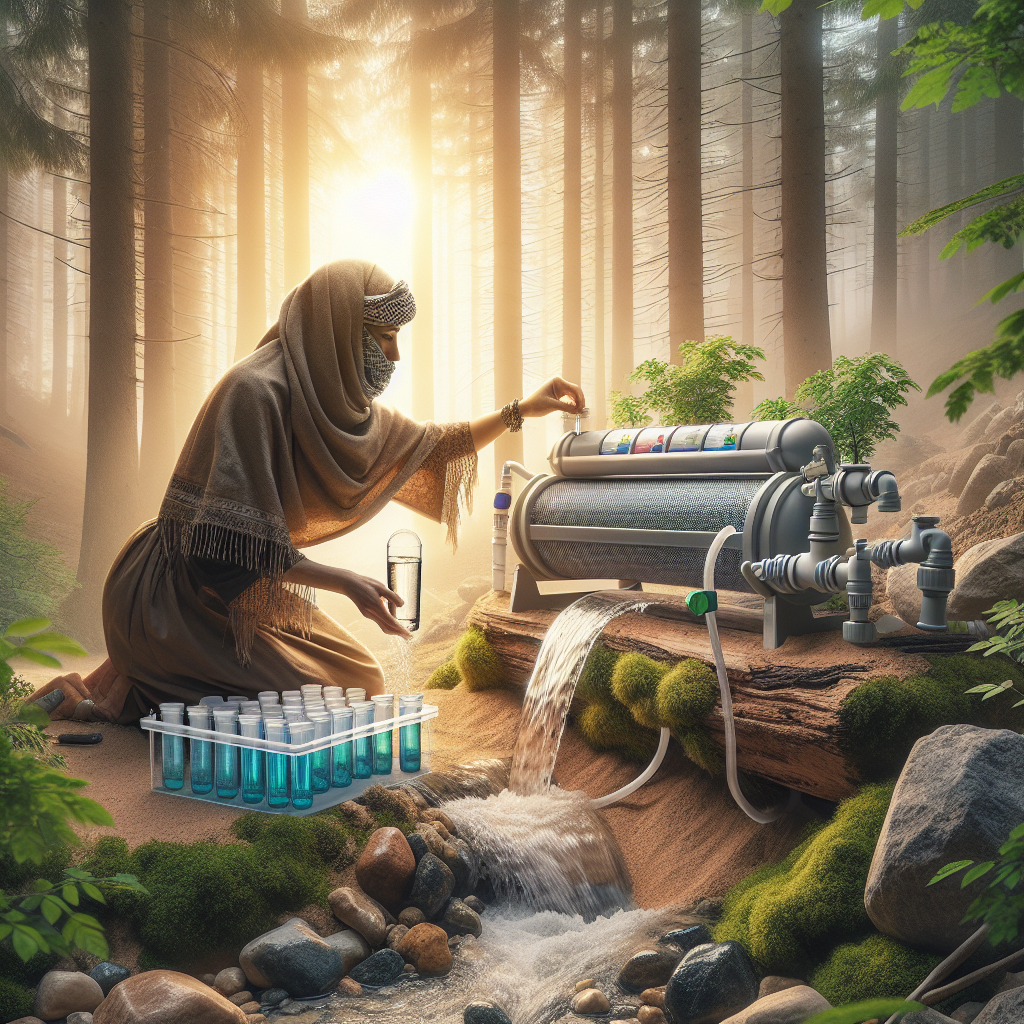Imagine you’re deep in the heart of nature, surrounded by pristine rivers and sparkling lakes. The only problem is, you’re running low on drinking water and you don’t have any store-bought filters on hand. But fear not! In this article, we’ll explore the most efficient water filtration techniques that can be used in the wild. From natural materials to DIY methods, we’ll cover it all so you can quench your thirst without worrying about any harmful contaminants. So grab your canteen and let’s find out how Mother Nature can help us stay hydrated!

Physical Filtration Techniques
Granular Filtration
Granular filtration is a highly effective physical filtration technique used to remove larger particles and debris from water. It involves passing the water through a bed of granular material, such as sand or gravel, which acts as a natural filter. As the water flows through the bed, the particles get trapped within the porous spaces between the granules, resulting in cleaner water. Granular filtration is commonly used in water treatment plants, but it can also be utilized in the wild to improve the quality of water from natural sources.
Sand Filtration
Sand filtration is another physical filtration technique that relies on the natural properties of sand to remove impurities from water. Similar to granular filtration, but specifically using sand as the filter medium, this method targets the removal of larger particles, sediment, and even some microorganisms. The water is passed through a layer of sand, with the porous structure capturing and retaining the contaminants. Sand filtration can be easily set up in the wild, making it a practical solution for improving water quality while out in nature.
Membrane Filtration
Membrane filtration is a more advanced physical filtration technique that involves the use of a thin, semi-permeable membrane to separate unwanted particles and substances from water. As the water is forced through the membrane, it acts as a barrier, allowing only clean water molecules to pass through while blocking out impurities. This method is highly effective in removing microscopic organisms, bacteria, and viruses, making it a reliable option for purifying water in the wild. However, it requires specialized equipment and may not be as readily available as other filtration techniques.
Chemical Filtration Techniques
Iodine Drops
Iodine drops are a chemical filtration technique commonly used to treat water in the wild. Iodine is known for its disinfectant properties and can effectively kill many harmful microorganisms found in untreated water. By adding a specific number of iodine drops to a given volume of water and allowing it to sit for the recommended contact time, the iodine will neutralize bacteria, viruses, and parasites, thus making the water safe to drink. However, it’s important to note that iodine drops may not be suitable for individuals with certain medical conditions or iodine allergies.
Chlorine Tablets
Chlorine tablets are another chemical filtration technique widely used for water treatment. Like iodine drops, chlorine tablets work by releasing chlorine into the water, which disinfects it by killing harmful microorganisms. To use chlorine tablets, simply add the recommended number of tablets to a container of water and wait for the required time for the chlorine to take effect. Chlorine-treated water can be safe to drink, but it’s essential to follow the instructions and allow sufficient contact time for optimal disinfection.
Activated Carbon
Activated carbon is a chemical filtration technique that relies on the adsorption properties of carbon to remove contaminants from water. The activated carbon has a large surface area, with numerous tiny pores that can trap pollutants, chemicals, and even certain metals. When water passes through a filter containing activated carbon, these impurities become trapped within the carbon’s structure, resulting in cleaner water. Activated carbon filters can effectively remove unpleasant odors, flavors, and organic compounds, making them a popular choice for improving the taste and quality of water in the wild.

Natural Filtration Techniques
Solar Disinfection
Solar disinfection, also known as SODIS, is a natural filtration technique that utilizes the heat and ultraviolet (UV) radiation from the sun to disinfect water. This method involves filling clear plastic or glass bottles with water from a natural source, such as a river or lake, and exposing them to direct sunlight for a minimum of six hours. The combined effect of heat and UV radiation kills most harmful microorganisms, making the water safer to drink. Solar disinfection is a simple and cost-effective method that can be used in the wild, particularly in sunny and warm climates.
Boiling
Boiling water is one of the most traditional and reliable natural filtration techniques used to purify water in the wild. By bringing water to a rolling boil for at least one minute (or longer at higher altitudes), the heat kills off most harmful bacteria, viruses, and parasites, effectively making the water safe to consume. Boiling is a straightforward and easily accessible method, requiring only a heat source, a pot, and a few minutes of your time. However, it’s important to note that boiling water may not eliminate certain chemical contaminants, so it may not be the most comprehensive solution in certain situations.
Plant Filtration
Plant filtration, also known as phytoremediation, is a natural technique that involves the use of specific plants to filter and purify water. Certain aquatic plants, such as water hyacinths and reeds, have the ability to absorb and accumulate contaminants, such as heavy metals, pesticides, and organic pollutants, from water. By allowing water to pass through a specially designed system incorporating these plants, the contaminants become trapped and removed, resulting in cleaner water. Plant filtration is a more complex technique that requires careful selection and arrangement of plants, but it can be a sustainable and eco-friendly solution in the wild.

Improvised Filtration Techniques
Cloth Filtration
Cloth filtration is an improvised technique that can be useful in emergency situations where no specialized equipment is available. By using a clean cloth, such as a cotton t-shirt or a bandana, as a makeshift filter, you can remove larger particles, sediment, and debris from water. Simply secure the cloth over a container, pour the water through it, and let the cloth capture the impurities while allowing the cleaner water to pass through. Although cloth filtration is not as effective as other filtration methods, it can still help improve the quality of water in the wild, especially when no other options are present.
Charcoal Filtration
Charcoal filtration is another improvised technique that utilizes the adsorption properties of activated charcoal to remove impurities from water. To create a charcoal filter, you can use a container, such as a water bottle or a bucket, and fill it with several layers of crushed or powdered charcoal. As water passes through the charcoal, contaminants, chemicals, and unpleasant odors and flavors become trapped, resulting in cleaner and better-tasting water. Charcoal filtration can be a practical solution when faced with limited resources and the need for improved water quality in the wild.
Coffee Filter Filtration
Coffee filter filtration is a simple and accessible improvised technique that can effectively remove larger particles and sediment from water. If you have a coffee filter or even a paper towel on hand, you can fashion it into a makeshift filter by securing it over a container and pouring the water through it. The fine pores of the coffee filter will capture the suspended particles, leaving you with cleaner water. While this method may not eliminate all contaminants or provide comprehensive filtration, it can be a quick and convenient option when faced with the need for immediate water improvement in the wild.
In conclusion, when exploring or embarking on outdoor adventures, it is crucial to prioritize the quality and safety of the water you consume. The most efficient water filtration techniques in the wild encompass a range of physical, chemical, natural, and improvised approaches. Physical filtration techniques such as granular filtration, sand filtration, and membrane filtration target the removal of larger particles and impurities. Chemical filtration techniques such as iodine drops, chlorine tablets, and activated carbon rely on chemical reactions to disinfect and remove contaminants. Natural filtration techniques such as solar disinfection, boiling, and plant filtration utilize natural processes to purify water. Improvised filtration techniques such as cloth filtration, charcoal filtration, and coffee filter filtration offer practical solutions when faced with limited resources. By understanding and implementing these techniques, you can ensure access to safe and clean water during your outdoor endeavors. Remember to research and familiarize yourself with specific filtration methods before heading out into the wild, and always prioritize your health and well-being.
